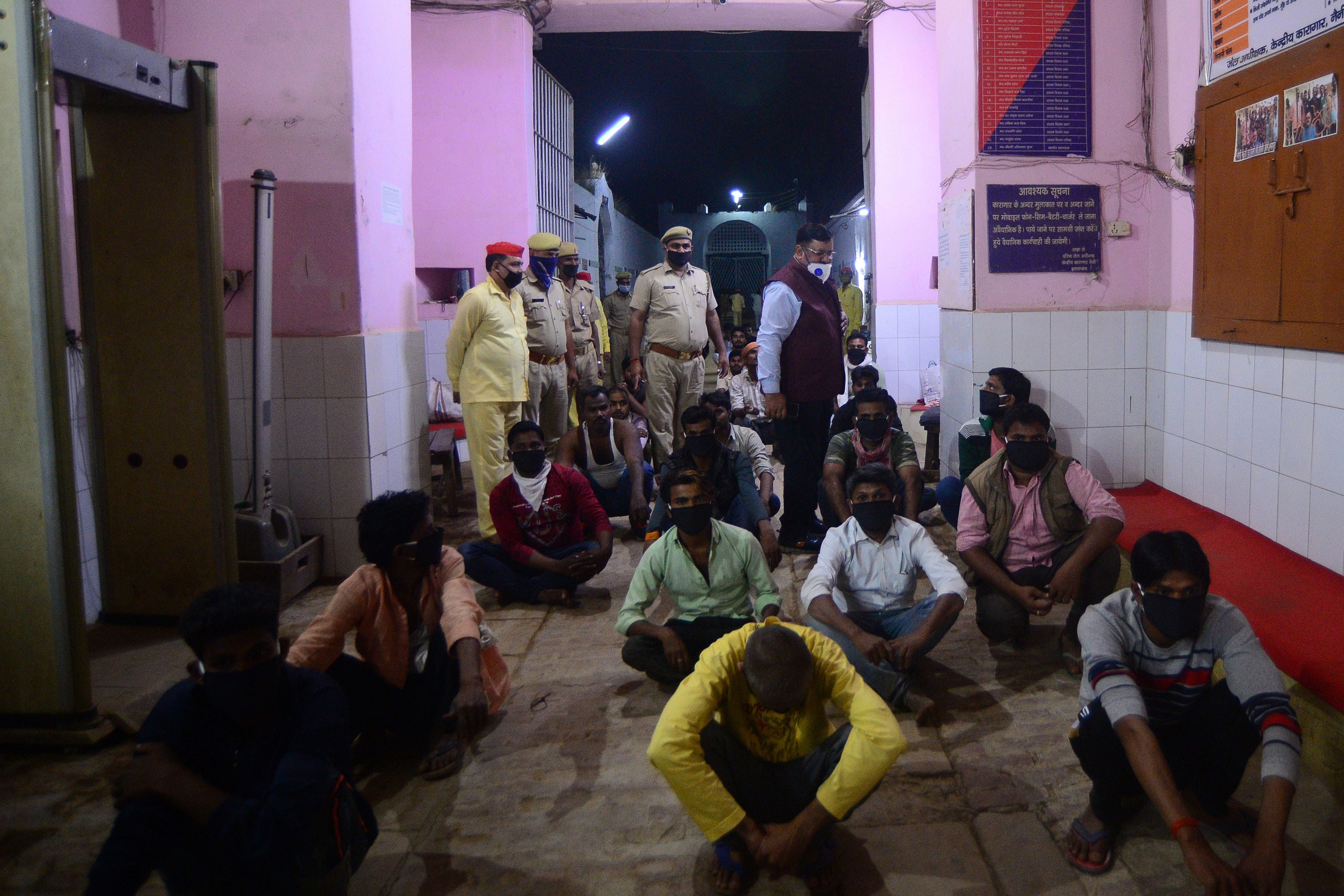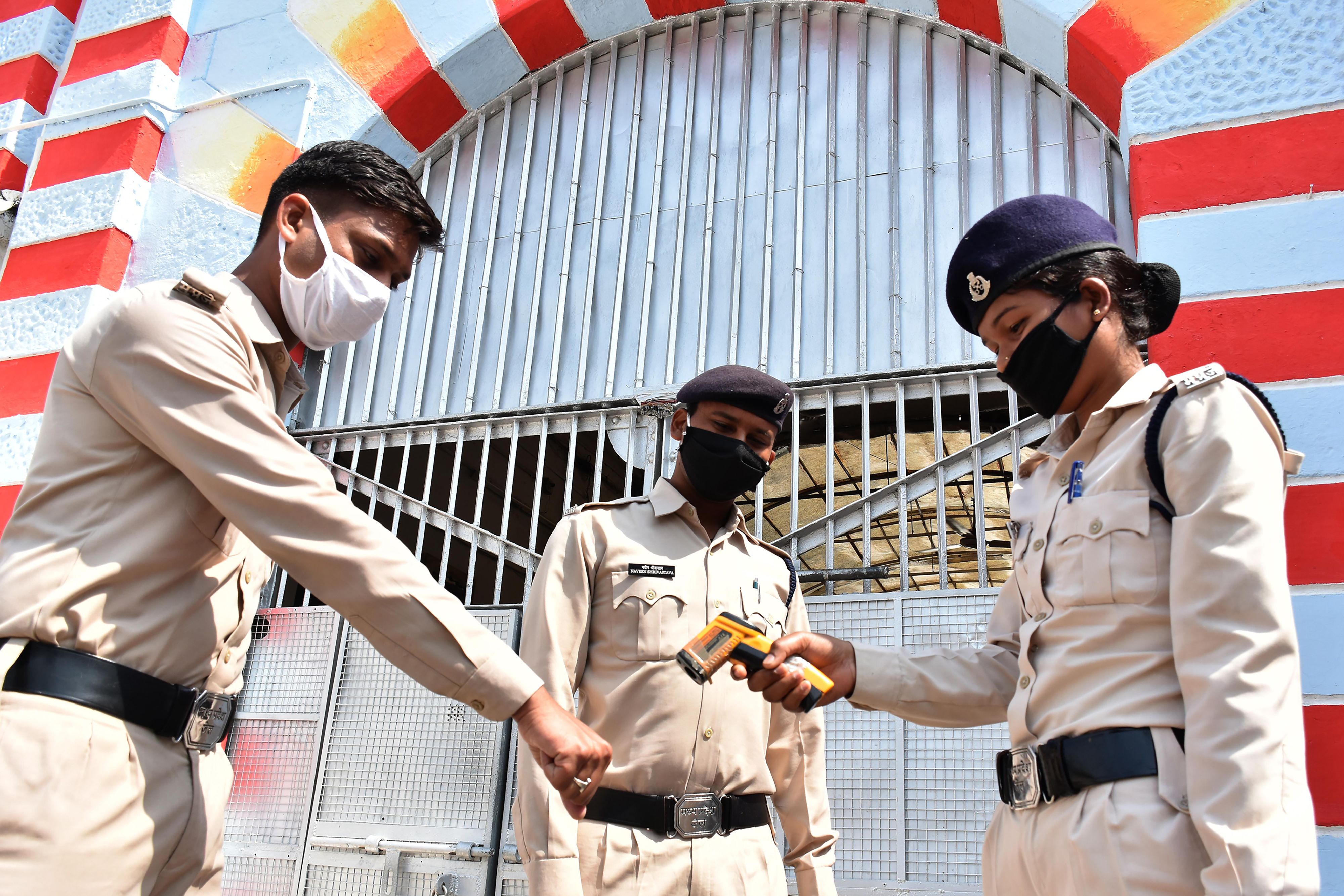‘We may die inside’: How India’s prisons became sitting ducks for Covid-19
Overcrowded prisons with inadequate medical facilities have inmates in India terrified for their health as measures to contain the virus fall short. Akshita Jain reports from Delhi


Jailed Indian activist Umar Khalid woke up with a fever and a body ache in his Tihar prison cell in April this year. He immediately went to the jail’s medical facility to get tested for Covid-19, but was sent back with a few medicines.
He finally got a Covid test, which came back positive, only after six days of symptoms and a court order, according to an account Khalid, who was arrested under the draconian Unlawful Activities Prevention Act (UAPA) back in September 2020, wrote in a column for The Print.
Khalid has since recovered from Covid, but there are many in India’s over-occupied jails who haven’t been as lucky. Lawyers say there’s one refrain they hear time and again from clients: “We may die inside.”
Every time lawyer Ajay Verma holds counselling sessions for inmates in India’s prisons, he hears them speak of their fear of dying of Covid, especially since the outbreak dramatically worsened this year.
Getting a clear picture of the reality for inmates isn’t easy, with regular visits by activists and even the prisoners’ own lawyers suspended during the current devastating second wave. Prisoners who are out on bail declined to comment to The Independent, fearing repercussions. When student activist Natasha Narwal, also charged under the UAPA, was granted interim bail last month, the court asked her to maintain “radio silence” – in other words, not talk to the media.
Prisons in India, which were considered high risk because of overcrowding and inadequate health facilities, were hit hard soon after the coronavirus began spreading in the country. Several of them turned into hotspots with both the staff and the inmates testing positive in large numbers.
Why prison decongestion did not work
Anticipating this, the Supreme Court in March last year ordered urgent decongestion measures be taken, directing states to set up high-powered committees (HPCs) to determine which inmates could be temporarily released.
Verma, who is also the former convener of the National Forum for Prison Reforms, says that the decongestion was largely inadequate because despite the release, the police kept making new arrests. “Last year, around 60,000 people got released after the Supreme Court order, but the police made 40,000 new arrests. The purpose was not achieved,” he said.
The top court again passed an order last month directing the police not to make arrests unless necessary for crimes carrying prison sentences less than seven years.
But activists don’t have much hope for improvement because another big reason why the decongestion was ineffective, and why prisons became epicentres for the spread of Covid-19, is the infrastructure of the facilities themselves.
“The ‘decongested’ prisons were running close to their maximum capacities when ideally they ought to be far below that to allow for social distancing and similar measures,” says criminal lawyer Nipun Arora.
“A lot of inmates have been terrified of the possibility that they might get infected inside and this fear was present during the first wave as well. The fear is stemming primarily from the fact that neither is social distancing being practised, nor are masks being used properly by the inmates. The conditions of the prisons are even otherwise considered unhygienic.”
The average occupancy rate across Indian jails in 2019 was 118.5 per cent – increased from 117.6 per cent in 2018 – with the national capital Delhi topping the chart at 174.9 per cent, followed by the state of Uttar Pradesh at 167.9 per cent, according to National Crime Records Bureau’s 2020 report.
Statistics show that while the sanctioned strength of jail staff was 87,599, the actual strength was only 60,787, according to latest figures as of 31 December 2019. A similar scenario played out for medical staff. The actual strength was 1,962 as against the sanctioned strength of 3,320.
Positions lying vacant
Vijay Raghavan, a professor at the Tata Institute of Social Sciences (TISS), says the root of the problem is that the prison staff have been left to deal with the situation without the government equipping them with resources. They were given masks, hand sanitisers and hand wash supplies, but the main issue remained with filling vacancies in the prison department, including those of medical officers, psychiatrists, lab technicians, and para-medical staff.
Lawyers and activists say medical facilities are so lacking that prisons became sitting ducks for a Covid-19 outbreak which has already infected over 28 million people in India.
“While prisons have a hospital and medical staff, they are not at all adequate to deal with a crisis of this level,” says Arora.

Reports of inmates and staff falling ill started trickling in as early as May last year. Though no official data is available on the total number of cases, the non-profit Commonwealth Human Rights Initiative (CHRI) says there have been more than 22,000 reported cases among inmates and staff, and at least 35 deaths.
This data is based on media reports and does not include at least two months – January and February – due to lack of proper reporting.
“It’s always difficult to collate data by oneself because it often remains incomplete if all states or union territories do not choose to reply,” says Madhurima Dhanuka, programme head of prison reforms at CHRI. She says the organisation wrote to all states, and received responses from 27 out of the 36 states and union territories only after persistent follow-up.
Some prisons did take precautionary measures after the first few infections were reported. Dhanuka says the home affairs ministry and National Human Rights Commission of India issued guidelines for precautions in 2020 as well as in 2021.
“One can only hope that they were read and adopted, though there is no way to check,” she says. Testing for Covid-19, however, remains an issue. The Supreme Court last month noted that the spread of the virus should be controlled in prisons by regular testing of prisoners and jail staff. Verma claims that unless there’s a complication, inmates are not tested for Covid.
Dhanuka also fears that the flow of up to date information – so crucial during a fast-evolving pandemic – is completely inadequate when it comes to prisons. “Not all prisons provide equal access to outside information, and with visitations restricted and little connection with the outside world, I would not be surprised if prisoners are not even aware of the gravity of the situation outside,” she says.
Mental health at risk
Despite the fear and anxiety, there is little psychological support provided to the inmates. Activists have said that recreational activities and visits by social workers have also been stopped in the wake of the second wave, and that this is likely to affect prisoners’ mental health.
“In Maharashtra, there are just two or three posts of psychiatrists. The situation isn’t much different in other states. Some states, like Tamil Nadu, have posts of psychologists attached to prisons. But in most other prisons, there are no posts of psychiatrists, psychologists or counsellors,” Professor Raghavan says.
Calls to release political prisoners – activists and journalists – have gained momentum after the death of Mahavir Narwal, father of Natasha Narwal, from Covid-19 related complications.
He passed away on 9 May, a day before his daughter’s bail petition to visit him in hospital was to be heard, said Pinjra Tod, the activists’ collective Ms Narwal is associated with.
Narwal was granted a three-week interim bail to allow her to cremate her father. She surrendered and returned to Delhi’s Tihar jail last week. Following her surrender, Pinjra Tod demanded “immediate and unconditional” release of all political prisoners.
Raghavan points out that the offences under which political prisoners have been arrested have been excluded by most HPCs from the categories they considered for the release of inmates. “UAPA, terror offences, NDPS, economic and sexual offences have been excluded by most HPCs,” he says.
Narwal last month filed a petition to demand the vaccination of inmates at Tihar prison, where she is lodged. The Delhi High Court subsequently directed the superintendent of Central Jail-6 of Tihar prison to request vaccines for inmates in the 18-44 age group.
Verma says vaccination has begun in India’s prisons, and authorities are encouraging inmates to get vaccinated, but not everyone is willing to take the jab – perhaps unsurprisingly, given the lack of information at their disposal.
India has been administering doses after registration at an online government platform, called CoWIN, which requires a valid ID proof. In the absence of a government ID, prison authorities have now started registering inmates using their unique prison ID.
There were 478,600 inmates in India’s prisons at the end of 2019. Yet at the time of publication, CHRI data shows that only 38,000 doses of Covid-19 vaccine have been administered to inmates and prison staff.
Join our commenting forum
Join thought-provoking conversations, follow other Independent readers and see their replies
Comments